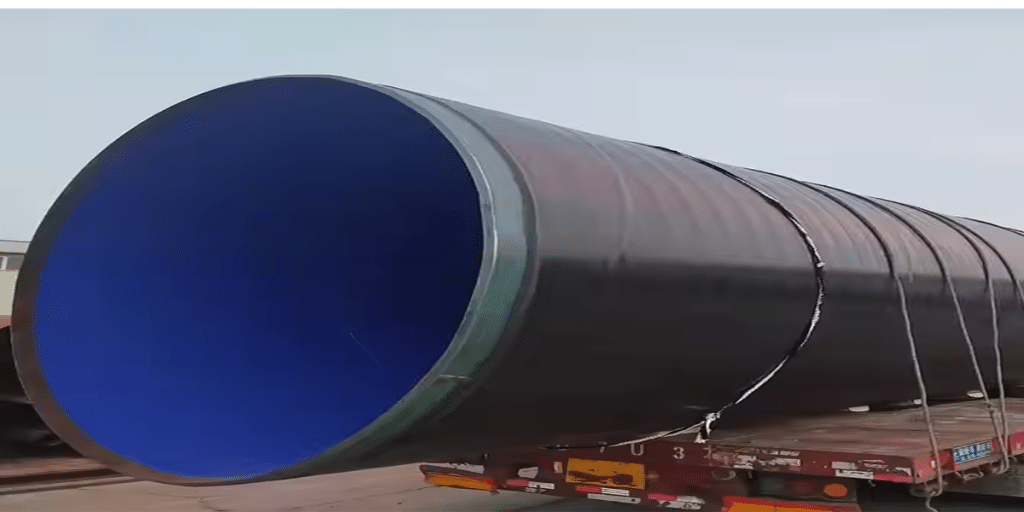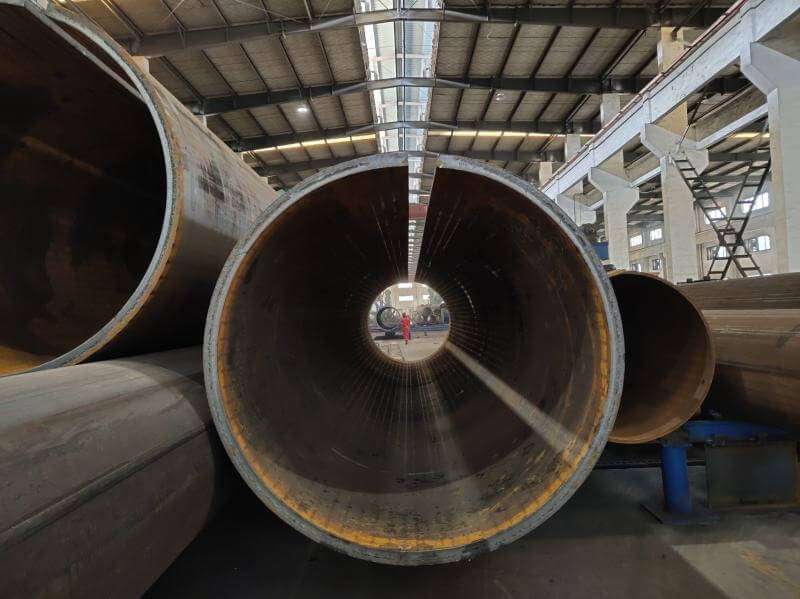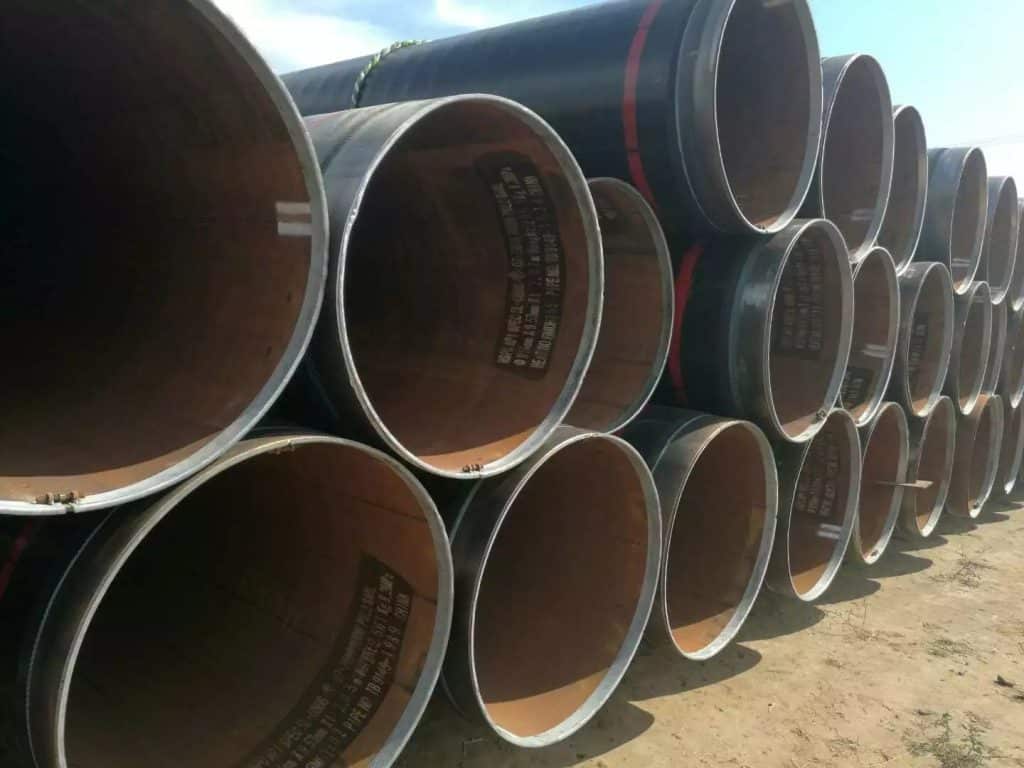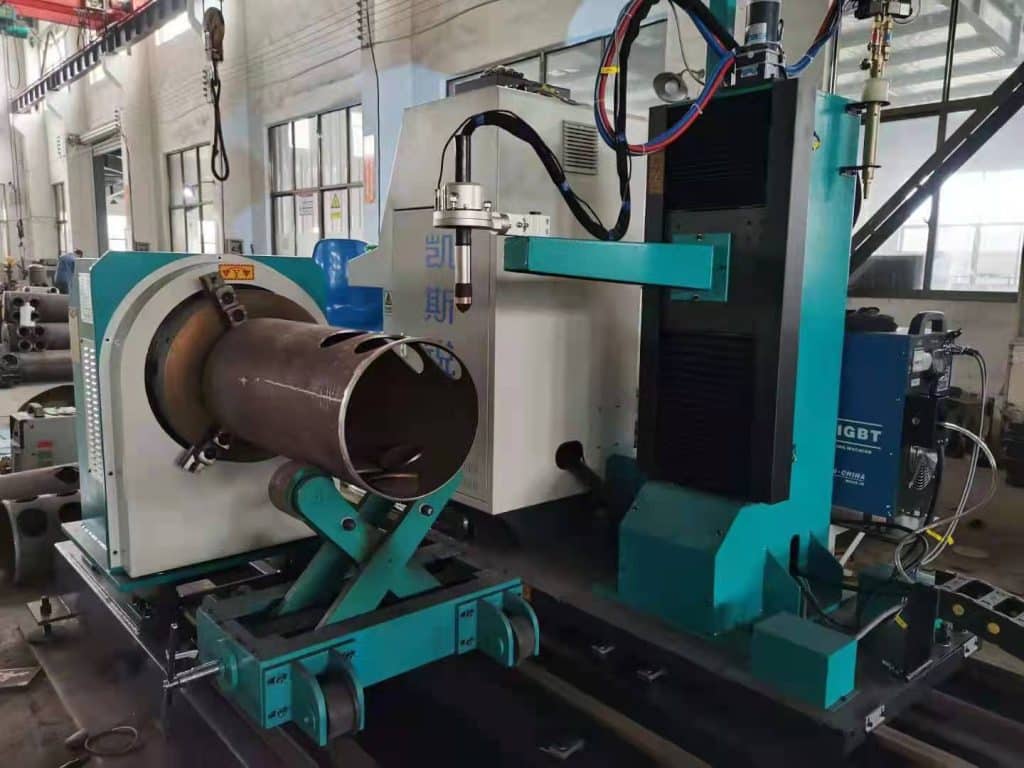- 1. How to Clarify Project Requirements: The Use Determines the Type?
- 2. Understanding the Performance Characteristics of Different Types of Steel Pipes
- 3. Steel Pipe Standards and Certifications
- 4. Sage Environment and Service Life Requirements
- 5. Calculate the Total Cost: It’s not just about the purchase price
- 6. Evaluating the Supplier and Their Delivery Capability
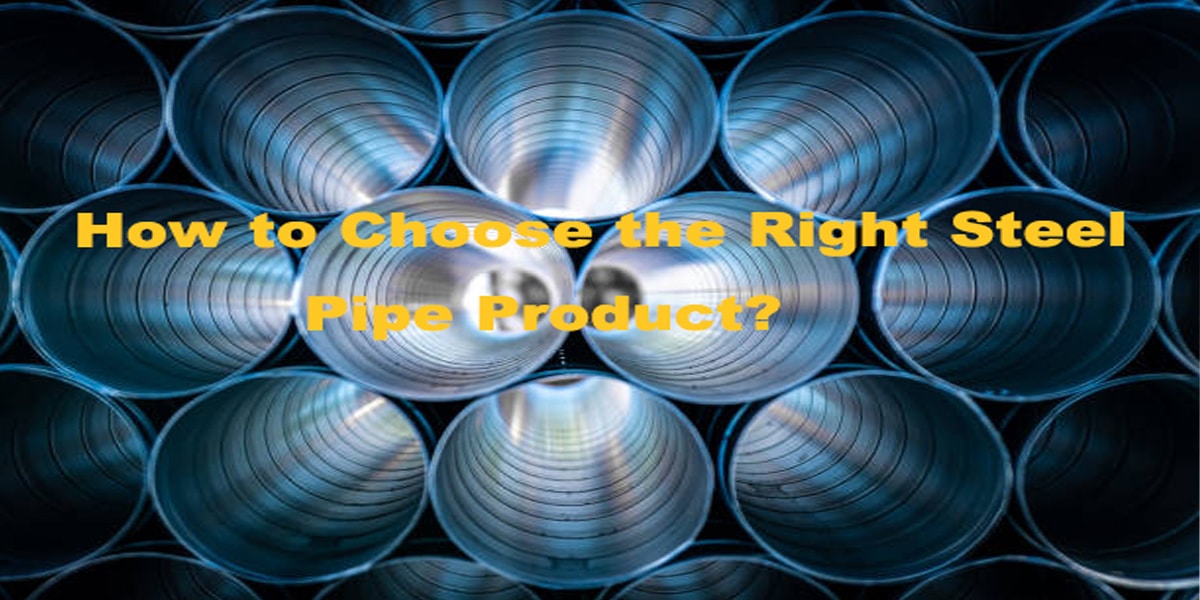
How to Clarify Project Requirements: The Use Determines the Type?
When selecting steel pipe products, clarifying the actual project requirements is the first step. Different usage scenarios and project needs determine the type, specifications, and coating choices of the steel pipe. For example, in selecting steel pipes for construction, the focus is usually on load-bearing capacity, corrosion resistance, and compatibility with other structures; whereas, for oil and gas transmission pipelines, pressure resistance and corrosion resistance are crucial considerations. To help you select the right steel pipe for your project, let’s explore common usage scenarios:
1. Structural Support Usage
Structural support projects require steel pipes with high strength and stability, typically used in large support structures such as buildings, bridges, and towers. The steel pipe must have high compressive and seismic resistance. Common types of steel pipes include:
Structural Steel Pipe (e.g., ASTM A500): Commonly used in building structures and bridge supports, it has high strength and stability, making it suitable for carrying heavy loads.
Seamless Steel Pipe (e.g., ASTM A53): Used for structural support where large pressures are involved, suitable for high-strength projects such as skyscrapers and tower structures.
Hot-Dip Galvanized Steel Pipe (e.g., ASTM A123): Suitable for outdoor or humid environments, offering strong corrosion resistance and long-term stability in supporting structures.
2. Fluid Transmission Usage
Fluid transmission pipelines are primarily used for transporting liquids or gases such as oil, natural gas, water, and chemicals. These steel pipes need to have high pressure resistance, corrosion resistance, and good sealing properties. Common types of steel pipes include:
API 5L Steel Pipe: Widely used in oil and gas transmission, it can withstand high pressure and temperature, suitable for long-distance oil and gas pipelines.
ASTM A106 Steel Pipe: Suitable for general liquid and gas transmission, offering good pressure resistance, commonly used in industrial gas and liquid pipeline systems.
FBE Coated Steel Pipe: Used in environments where corrosive fluids are transported, particularly suitable for oil and gas transmission, providing effective corrosion prevention.
3. Pile Foundation Construction Usage
Steel pipe piles are used in foundation construction, especially in soft soil or complex soil conditions, providing strong support. Common types of steel pipes include:
ASTM A252 Steel Pipe: Widely used in pile foundation construction, especially in large foundational projects like high-rise buildings, bridges, and docks. It has good compressive strength and provides stable support in complex soil environments.
API 5L Gr.X Steel Pipe: While primarily used in oil and gas transmission, API 5L Gr.X steel pipe can also be applied in special pile foundation projects, particularly in marine platforms and oil platforms that require high strength and corrosion resistance.
Seamless Steel Pipe (e.g., ASTM A106): Used in pile foundation construction, with high strength and durability to withstand large pressures, commonly used in foundation reinforcement.
4. Projects with High Corrosion Resistance Requirements
In special environments such as marine engineering, chemical plant areas, and underground pipelines, the corrosion resistance of steel pipes is crucial. Common types of steel pipes include:
FBE Coated Steel Pipe (e.g., ASTM A53): Suitable for marine engineering, chemical fluid transmission, and other environments requiring corrosion resistance, the FBE coating effectively prevents corrosion, extending the pipe’s service life.
Hot-Dip Galvanized Steel Pipe (e.g., ASTM A123): Suitable for high-humidity and high-salinity environments, commonly used in outdoor corrosion protection applications.
Double Submerged Arc Welded Steel Pipe (e.g., LSAW Steel Pipe): Suitable for large pipeline projects, particularly long-distance transmission pipelines, effectively enhancing corrosion resistance, suitable for oil, gas, and wastewater transmission.
Understanding the Performance Characteristics of Different Types of Steel Pipes
When selecting steel pipe products, it is crucial to understand the specific performance characteristics of various types of steel pipes. Each type of steel pipe is designed to meet specific requirements, considering factors such as strength, corrosion resistance, pressure resistance, and the operating environment. Below, we introduce the performance characteristics of several common types of steel pipes:
1. Seamless Steel Pipe vs Welded Steel Pipe
Seamless Steel Pipe Characteristics:
1. Integrity of Structure: Seamless steel pipes have no welded joints, meaning the entire pipe is a single piece, making it more uniform in pressure-bearing and reducing potential defects at welded joints.
2. High Strength: Without welded joints, the overall strength and pressure resistance of seamless steel pipes are higher, making them suitable for applications requiring high pressure tolerance.
3. Wide Range of Applications: Commonly used in high-pressure, high-temperature, and harsh environments, such as in the petroleum and natural gas industries, chemical equipment, and boiler pipelines.
4. Higher Cost: Due to more complex manufacturing processes, seamless pipes are more expensive than welded pipes.
Application Examples: 1. Petroleum and natural gas transmission pipelines. 2. High-pressure boiler pipelines 3. Fluid transmission systems
Welded Steel Pipe Characteristics:
1. Lower Manufacturing Cost: Welded steel pipes are easier and cheaper to manufacture, making them suitable for large-scale production.
2. Suitable for Low-Pressure Environments: Due to the welded joints, welded pipes are not suitable for high-pressure applications but are sufficient for general fluid transportation and structural support.
3. Customizable: Welded pipes can be adjusted in length, diameter, and wall thickness according to specific needs, offering more flexibility.
4. Slightly Lower Strength: The strength of welded joints is slightly lower than that of seamless pipes, and welded areas may have minor defects, but they are generally sufficient for most construction and industrial applications.
Application Examples: 1. Water pipelines. 2. Low-pressure transmission of petroleum and natural gas. 3. Structural support in construction
2. Carbon Steel vs Alloy Steel vs Stainless Steel Pipes
Carbon Steel Pipe Characteristics:
1. Low Cost: Carbon steel pipes are the most common type of steel pipes, with relatively low manufacturing costs, making them suitable for many general engineering projects.
2. High Strength: Carbon steel pipes have good strength, making them suitable for applications that require high pressure tolerance.
3. Poor Corrosion Resistance: Compared to alloy and stainless steel, carbon steel is more prone to rusting and requires additional corrosion protection, such as coatings or galvanization.
Application Examples: 1. Water pipelines. 2. Petroleum and natural gas pipelines (low-corrosion environments). 3. Structural support in construction
Alloy Steel Pipe Characteristics:
1. High Strength and High-Temperature Resistance: Alloy steel pipes, which contain elements such as chromium, molybdenum, and manganese, enhance the strength, high-temperature resistance, and corrosion resistance of the pipe.
2. Good Wear Resistance: Alloy steel pipes exhibit strong wear resistance, making them suitable for high-wear environments.
3. Higher Cost: Due to the addition of alloy elements, the manufacturing cost of alloy steel pipes is relatively high.
Application Examples: 1. High-temperature and high-pressure pipelines. 2. Heat exchangers. 3. Petrochemical industry
Stainless Steel Pipe Characteristics:
1. Strong Corrosion Resistance: Stainless steel pipes contain a high percentage of chromium, which effectively resists oxidation and corrosion, making them suitable for harsh corrosive environments.
2. Antibacterial Properties: Due to their smooth surface and resistance to fouling, stainless steel pipes also have some antibacterial properties, making them suitable for industries with high hygiene standards, such as food and pharmaceutical industries.
3. Moderate Strength: While stainless steel pipes have slightly lower strength than alloy steel pipes, they still perform well in corrosive environments.
Application Examples: 1. Food and pharmaceutical industries. 2. Food and pharmaceutical industries. 3. Medical and chemical equipment
3. Cold-Rolled Steel Pipe vs Hot-Rolled Steel Pipe
Cold-Rolled Steel Pipe Characteristics:
1. Smooth Surface: Cold-rolled steel pipes have a smooth surface and high dimensional accuracy, making them suitable for applications requiring high precision.
2. High Strength: The cold-rolling process enhances the strength of the steel pipe, making it suitable for precision machinery and structural applications.
3. Prone to Corrosion: Since cold-rolled pipes are not subjected to heat treatment, they are more susceptible to external corrosion and require additional protective coatings.
Application Examples: 1. Precision instruments. 2. Automotive industry. 3. Structural applications
Hot-Rolled Steel Pipe Characteristics:
1. High Production Efficiency: Hot-rolled steel pipes are produced at high temperatures, allowing for faster production speeds, making them suitable for mass production.
2. Moderate Strength: Hot-rolled steel pipes have slightly lower strength compared to cold-rolled pipes, but their manufacturing process is simpler, making them suitable for most general applications.
3. Larger Dimensional Tolerances: Due to the high-temperature process, hot-rolled pipes typically have larger dimensional tolerances than cold-rolled pipes.
Application Examples: 1. Industrial pipelines. 2. Overhead power transmission structures. 3. Heavy machinery applications
Steel Pipe Standards and Certifications
When selecting steel pipe products, confirming the applicable standards and certification requirements is a crucial step to ensure that the pipes meet quality, safety, and performance requirements. Different countries and industries have their own standards. Below is an overview of common standards and certification requirements:
1. International Standards and Certification Requirements
ISO 9001: This is an internationally recognized quality management system standard, widely applied in the manufacturing process of steel pipes. It ensures that manufacturers meet customer and regulatory requirements through continuous improvement in quality management.
API 5L: This standard is for steel pipes used in the oil and gas industry, specifying the material requirements for pipes used in the transport of oil and natural gas, including tensile strength, corrosion resistance, etc. API 5L steel pipes are widely used in oil and gas pipelines and long-distance transportation.
ASTM A53: This is a US standard for general fluid transport steel pipes. It requires the pipes to have sufficient strength and good welding performance, suitable for low-pressure fluid and gas transport.
ASTM A106: This standard applies to carbon steel pipes used in high-temperature and high-pressure environments, commonly used in industrial boilers, petrochemical industries, etc.
EN 10219: This is a European standard for cold-formed welded steel pipes, widely applied in structural engineering, bridge construction, etc., requiring the pipes to have good mechanical properties and corrosion resistance.
2. Australian Standards
AS 1163: This is an Australian standard for structural steel pipes, primarily used in construction and infrastructure. It specifies material requirements, dimensional tolerances, strength grades, and welding requirements. AS 1163 pipes are widely used in construction structural support, wind power tower structures, and high-pressure water pipelines. The standard also covers chemical composition, mechanical performance requirements, ensuring the stability of steel pipes when bearing structural loads.
3. Chinese Standards
GB/T 8162: This is a Chinese national standard for seamless steel pipes used in general structural applications, widely applied in construction, bridges, mechanical structures, etc. It specifies the external dimensions, material, and mechanical performance requirements for the pipes.
GB/T 9711: This Chinese standard applies to steel pipes used in the oil and gas pipeline industry, covering tensile strength, yield strength, welding performance, and corrosion resistance requirements.
4. US Standards and Certification Requirements
ASTM A500: This is a US standard for structural steel pipes, particularly used in buildings, bridges, and industrial structures. It specifies the chemical composition, mechanical performance, and dimensional requirements of the pipes, ensuring their performance under load conditions.
ASTM A53: Widely used for low-pressure fluid and gas transport, this standard applies to steel pipes suitable for general piping and low-pressure systems.
ASTM A106: This standard applies to carbon steel pipes used in high-temperature and high-pressure environments, widely used in petrochemical pipeline systems.
API 5CT: This standard is specifically designed for oil and gas well piping systems, mainly related to wellhead equipment and oil well pipelines, requiring high strength, corrosion resistance, and high-pressure performance.
UL Certification: This certification applies to steel pipe products sold in the US market, ensuring that the products meet safety requirements for specific use environments.
5. European Standards and Certification Requirements
EN 10217: This standard applies to welded steel pipes, widely used in water supply, HVAC, and industrial applications. It specifies the material, dimensions, tolerances, and welding quality requirements for welded steel pipes.
EN 10219: This standard applies to cold-formed welded steel pipes, requiring the pipes to have good mechanical properties and corrosion resistance, widely used in building structures, bridge construction, etc.
CE Certification: This certification applies to steel pipe products entering the European market, ensuring that the products meet health, safety, and environmental requirements of the European Economic Area.
PED 97/23/EC: This is the European Pressure Equipment Directive, applicable to steel pipes used in high-pressure fluid transport systems, ensuring the safety and applicability of pipeline systems.
6. Other Certifications and Quality Control
API 5L X65/X70: These standards apply to high-strength, high-pressure steel pipes, commonly used in oil and gas transport pipelines and cross-border transportation systems.
FBE Coated Steel Pipe: This type of steel pipe is suitable for environments where it will carry corrosive fluids, particularly in the oil and gas industry, and has excellent corrosion resistance.
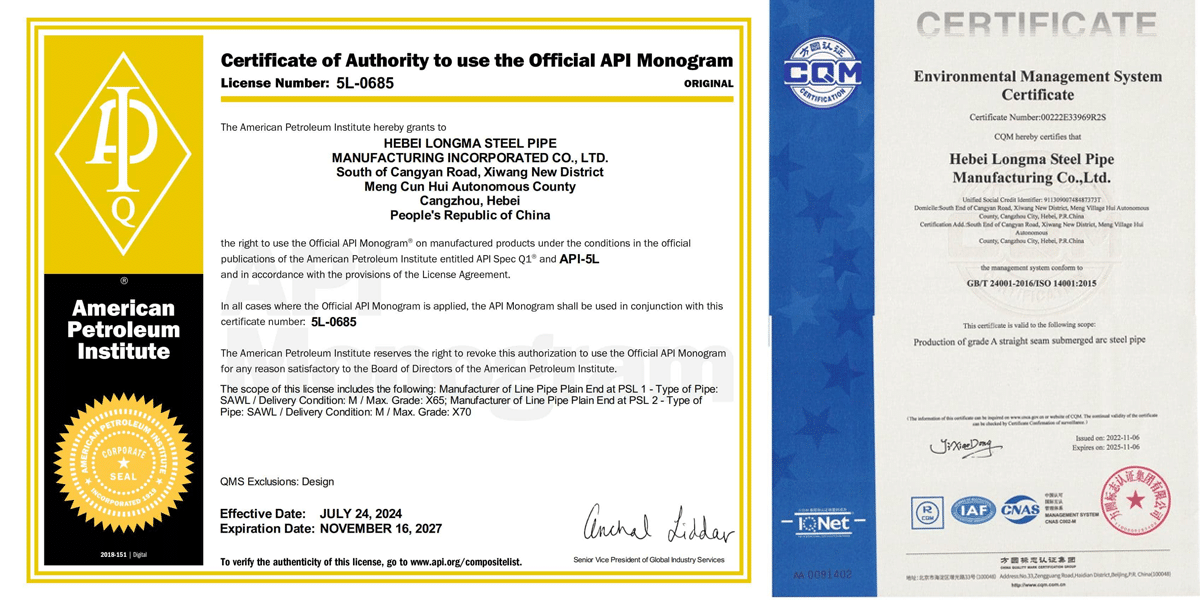
Sage Environment and Service Life Requirements
When choosing the appropriate steel pipe, usage environment and service life requirements are two crucial factors that directly impact the performance and effectiveness of the steel pipe. Here’s why these two factors need to be considered when selecting steel pipes:
1. Usage Environment
The usage environment determines the pressure, temperature, corrosion, and other factors that the steel pipe will be subjected to. Therefore, it is necessary to select the appropriate steel pipe material for specific environmental conditions.
Temperature: In high or low-temperature environments, certain steel pipes may become brittle or lose strength. Therefore, steel pipes suitable for high or low-temperature environments (such as alloy steel pipes, high-temperature resistant steel pipes) should be selected.
Corrosive Environment: If steel pipes are used in chemical, marine, or humid environments, they need to have strong corrosion resistance. In such cases, stainless steel pipes, galvanized steel pipes, or coated steel pipes (such as FBE-coated steel pipes) should be selected to extend service life and reduce corrosion impact.
Pressure and Load: In environments requiring high pressure or load-bearing, seamless steel pipes (such as ASTM A53, ASTM A106) or alloy steel pipes should be chosen because they offer higher strength and pressure resistance, making them suitable for oil and gas transportation pipelines or high-pressure boiler pipelines.
Wear Resistance: For environments with high abrasion (such as mining or certain industrial applications), wear-resistant steel pipes or alloy steel pipes should be selected as they provide stronger wear resistance, extending service life.
2. Service Life Requirements
The service life of steel pipes depends on the material’s durability and environmental factors. Projects requiring a long service life generally require high-quality, corrosion-resistant steel pipes. Below are some factors affecting the lifespan of steel pipes:
Corrosion Resistance: Steel pipes in wet, chemically corrosive, or marine environments generally have a shorter lifespan. For projects requiring a long service life, it is essential to choose materials with high corrosion resistance, such as stainless steel pipes, FBE-coated steel pipes, or hot-dip galvanized steel pipes.
High Temperature/High Pressure Resistance: Steel pipes working under high temperature or high-pressure conditions tend to age faster, reducing their service life. In such cases, alloy steel pipes or special coated pipes (such as high-temperature-resistant coatings) are typically a better choice.
Maintenance Cycle: Some steel pipe materials require higher maintenance costs or more frequent replacement cycles. For long-term projects, considering the maintenance and replacement costs of the pipes is crucial for the overall lifecycle cost.
Special Applications: In special environments such as marine engineering or oil platforms, steel pipes must have a long service life. Therefore, pipes with corrosion resistance, high-pressure, and high-temperature resistance should be selected to ensure the long-term safety and stability of the project.
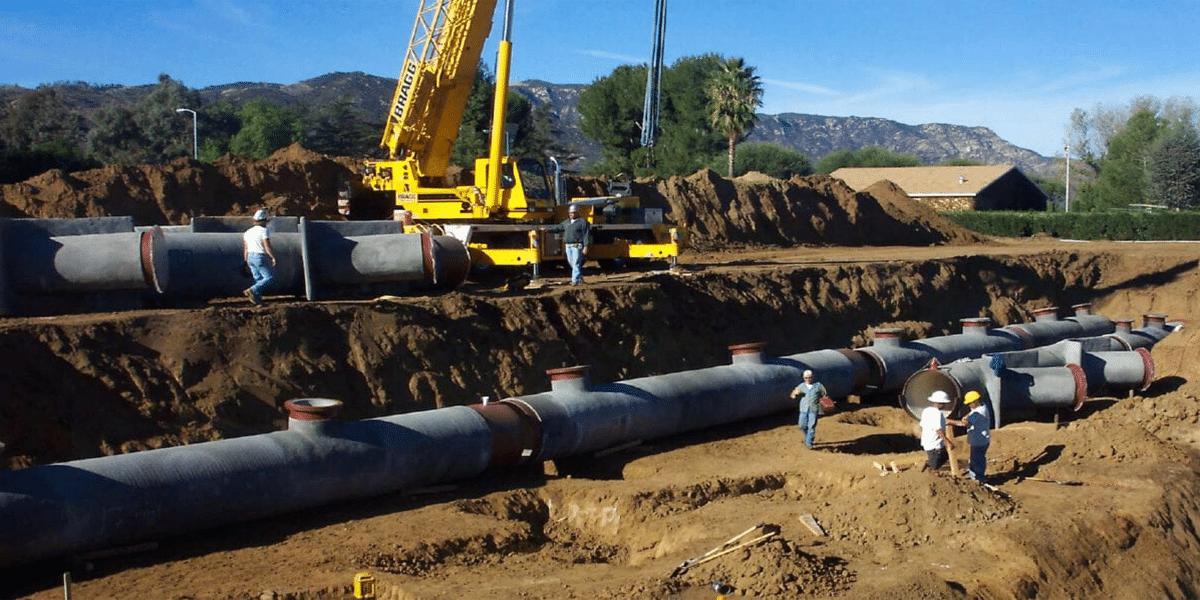
Calculate the Total Cost: It’s not just about the purchase price
When selecting steel pipe products, calculating the total cost involves more than just considering the purchase price. A comprehensive evaluation from multiple angles is necessary. Here are some factors that affect the total cost of steel pipes:
1. Purchase Price
Although the purchase price is an important component of the total cost, it is just the starting point. The purchase price is typically determined by the pipe’s specifications, material, and production process. While cheaper pipes might appear to have a lower cost upfront, if their performance in other areas is lacking, they may lead to higher maintenance and a shorter lifespan, ultimately increasing the total cost.
2. Transportation and Storage Costs
Transportation and storage costs are an often overlooked part of the procurement process. Steel pipes are generally large and heavy, leading to high transportation costs. When storing steel pipes, considerations must include warehouse space, loss, and corrosion protection, especially for pipes stored for long periods.
Transportation Costs: The transportation cost of steel pipes depends on the size, weight, and distance. When selecting a supplier, these transportation expenses, especially for long-distance shipping, should be considered.
Storage Costs: If the steel pipes need to be stored for a period, warehouse fees will increase. Pipes that are prone to rust or corrosion may require additional costs for corrosion protection.
3. Installation and Construction Costs
During installation and construction, the quality and type of steel pipe directly affect work efficiency and construction difficulty. For example, seamless pipes may require more complex installation procedures compared to welded pipes, leading to increased labor costs. Additionally, some pipes may require specialized equipment for installation, further increasing construction costs.
4. Maintenance and Replacement Costs
The lifespan, corrosion resistance, and pressure resistance of steel pipes directly influence how often maintenance and replacement are required. For example, pipes used in chemical plants or marine environments that are made of materials with poor corrosion resistance may require frequent maintenance or replacement, increasing long-term operating costs.
Regular Maintenance: Steel pipes with protective coatings or special materials may require regular checks and maintenance to extend their lifespan.
Replacement Costs: If steel pipes fail prematurely due to corrosion, wear, or other factors, replacement costs can be significant, especially in complex environments.
5. Energy and Operational Costs
If steel pipes are used to transport liquids or gases, the friction and flow efficiency of the pipes can affect energy consumption. For example, pipes with higher friction will lead to energy wastage, increasing operational costs. In this case, selecting pipes with lower friction coefficients or higher fluid flow efficiency can help reduce long-term operational costs.
6. Compliance and Standard Costs
In certain industries and regions, steel pipe products must meet strict standards and certification requirements. These requirements can affect pipe selection and, in turn, influence costs. For example, in the oil and gas industry, pipes may need to meet standards like API 5L, AS 1163, and these high-standard pipes may have higher procurement and certification costs.
7. Environmental Impact and Environmental Costs
Environmental regulations are becoming increasingly stringent, and choosing steel pipe products that meet environmental standards may require higher initial procurement costs. For example, using steel pipes that meet green environmental standards may involve additional certification and manufacturing costs. Additionally, factors like carbon emissions and resource consumption during the production process of steel pipes may generate environmental costs in certain regions, impacting the final total cost.
Example
Suppose a company is selecting steel pipes for a long-distance oil transmission pipeline. After comparing several options, the company chooses between two types of coated steel pipes: one is a traditional coated steel pipe, and the other is a steel pipe with a 3PE (Three-layer Polyethylene) coating.
Traditional Coated Steel Pipe: The initial purchase cost is lower, but due to its moderate corrosion resistance, it is more susceptible to corrosion when exposed to harsh environments (such as humidity and salt mist). Corrosion can cause a decline in the pipe’s pressure capacity, necessitating regular inspections, maintenance, and replacement of parts, thus increasing long-term operational costs.
3PE Coated Steel Pipe: Although the initial purchase price is higher, 3PE coating provides excellent corrosion resistance, effectively protecting the pipe from environmental damage and extending its lifespan. Even when exposed to harsh conditions like salt mist or chemical environments, the 3PE coating helps maintain the integrity of the pipe, reducing maintenance needs and the frequency of replacements, thereby lowering overall operational costs.
Evaluating the Supplier and Their Delivery Capability
Evaluating the supplier and their delivery capability is a crucial step. Purchasing steel pipes is not just about choosing a product that is competitively priced and of reliable quality; it also involves assessing the supplier’s reliability, delivery ability, technical support, and service quality. Specifically, the following factors are particularly important:
Supplier’s Production Capacity and Technical Expertise:Ensure that the supplier has the capacity to produce steel pipes that meet standard requirements and can provide technical support, especially for special specifications or complex requirements. The supplier’s advanced production equipment and technical level directly affect the product’s quality and production efficiency.
Delivery Capability and Lead Time:Evaluate the supplier’s ability to deliver, including delivery time, transportation methods, and responsiveness in emergency situations. Ensuring the supplier can meet delivery schedules is critical to avoiding delays in construction or production, particularly for large-scale projects where delays could result in significant losses.
Inventory and Supply Chain Management:Consider the supplier’s inventory levels and supply chain management capabilities to ensure they can meet bulk purchasing demands. A supplier’s ability to flexibly respond to market fluctuations and provide timely supply is key to the smooth execution of projects.
Quality Control and Certifications:Check if the supplier has a quality control system (such as ISO certification) and relevant product certifications (such as API, ASTM standards, etc.), which ensures that the steel pipes meet the required quality and performance specifications for the project.
After-Sales Service and Support:High-quality after-sales service helps resolve any issues that may arise during the use of the steel pipes, as well as technical support needs. Choosing a supplier that offers long-term technical support and maintenance services helps reduce operational costs and risks in the long term.
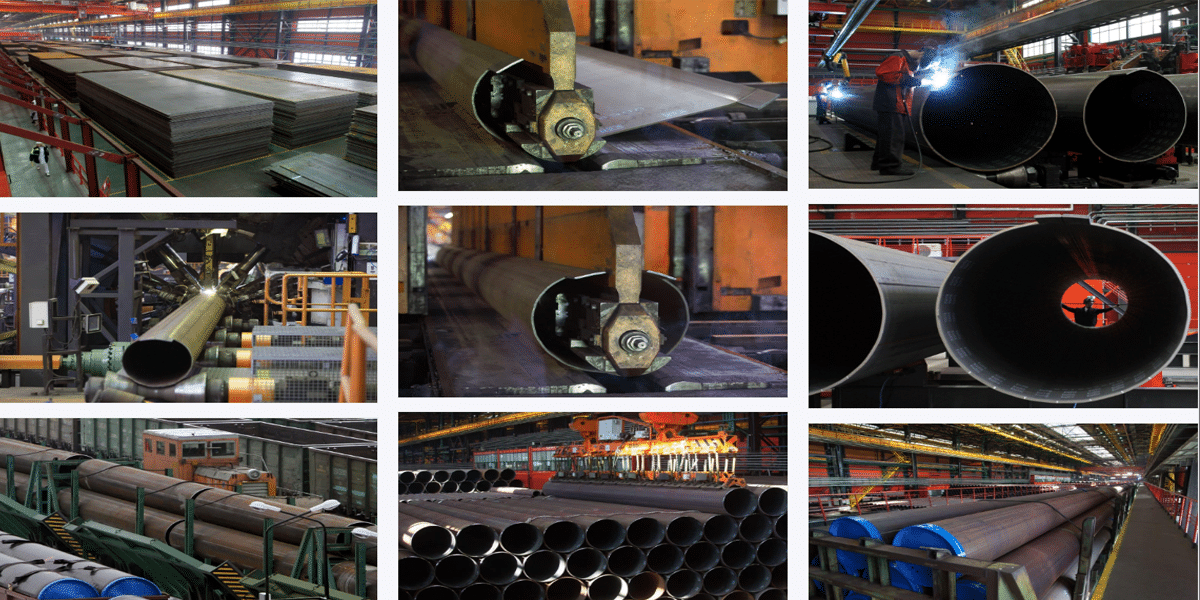
In conclusion, selecting the right steel pipe goes beyond just price and specifications. It’s important to assess the project’s specific needs, such as strength, corrosion resistance, pressure tolerance, and the environment. Whether for structural support, fluid transport, or high-corrosion applications, each use requires a tailored solution. Supplier evaluation is also key to ensuring reliable delivery, technical support, and after-sales service. Additionally, considering long-term maintenance costs and product durability will help make a more informed decision. By factoring in these elements — steel pipe type, specifications, and supplier capabilities — you can ensure your project’s success, minimize risks, and optimize costs. The right choice is an investment in your project’s long-term performance!

